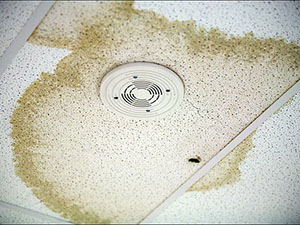
Water damage can cause significant harm to your property if not addressed quickly. Spotting the early signs of water damage can save you thousands of dollars in repairs and prevent further complications like mold growth, structural instability, and health hazards. Below, we’ll dive into six common signs of water damage in your home and what they could mean.
1. Discolored Walls or Ceilings
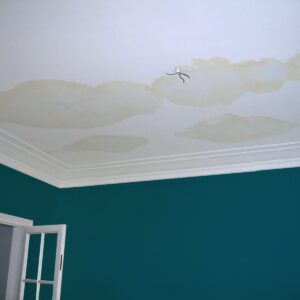
If you notice yellow, brown, or copper-colored stains on your walls or ceilings, it’s often a clear sign of water damage. These stains are typically caused by leaks in your roof, plumbing, or HVAC system. Water seepage over time leaves mineral deposits that create these unsightly marks.
Key areas to check:
- Ceilings directly below bathrooms or kitchens (plumbing leaks).
- Walls around windows and doors (possible roof or siding issues).
- Corners of the ceiling near rooflines (indicating roof leaks).
Ignoring water stains can lead to mold growth behind the drywall and weaken the integrity of the structure. Regular roof inspections and maintaining your plumbing system can prevent these issues. If you see these stains, act quickly by contacting a professional for an inspection.
2. Musty Odors
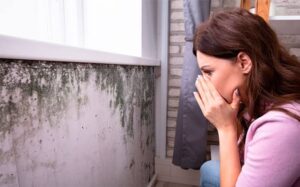
A musty smell is a common and often overlooked indicator of water damage. This odor usually results from moisture lingering in areas with poor ventilation, creating the perfect conditions for mold and mildew growth.
Where to Notice It:
- Basements or crawl spaces.
- Attics with poor airflow.
- Enclosed areas near bathrooms or kitchens.
A musty smell might seem minor, but it often signals hidden water damage that can worsen over time. Left unchecked, it can lead to structural issues and health risks from mold exposure.
3. Warped or Buckled Floors
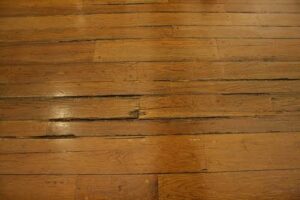
Water damage doesn’t always leave obvious visual signs like stains—it can affect your flooring, too. Warped, buckled, or swollen floorboards are a common indication of prolonged water exposure. This often happens when water seeps into your subfloor due to:
- Leaking appliances like dishwashers or washing machines.
- Plumbing issues under the flooring.
- Basement flooding that causes water to rise into the main floor.
Check for:
- Gaps between floorboards.
- Uneven surfaces or areas that feel soft when stepped on.
- Cracking or popping tiles in bathrooms or kitchens.
If left untreated, water damage to your floors can result in expensive repairs, as the subfloor may also need replacement.
4. Increased Water Bills

If your water bill suddenly spikes without a noticeable increase in usage, it might indicate a hidden leak somewhere in your home. Water leaks can be challenging to detect if they’re behind walls, under floors, or in your yard.
How to Identify It:
- Compare your water usage with previous months.
- Check for running water sounds when fixtures are off.
- Inspect areas near water pipes for moisture.
Catching a hidden leak early can save you from extensive water damage and costly repairs.
5. Visible Mold

Mold thrives in moist, dark environments, making it one of the most obvious signs of water damage in your home. Mold can appear as green, black, or even white patches on walls, ceilings, and floors. It may also spread behind surfaces where water damage is present.
Key places to inspect for mold:
- Bathrooms, especially around tiles and grout.
- Basements and crawl spaces.
- Attics near roof leaks.
Mold isn’t just unsightly—it poses health risks, especially for individuals with allergies or respiratory conditions. If you notice mold, you must address both the water source and the mold itself immediately. Professional mold remediation services can eliminate the problem and prevent it from returning.
6. Soft or Rotting Wood
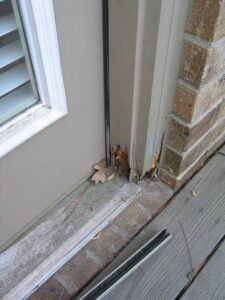
Rotting wood is a severe indicator of prolonged water damage. Wood absorbs moisture over time, leading to decay, soft spots, and structural weakening. You might notice rotting in:
- Window sills and door frames exposed to rainwater.
- Wooden floors or subfloors impacted by plumbing leaks.
- Roof beams and attic framing affected by roof leaks.
Signs of rotting wood include:
- Wood that feels soft or spongy to the touch.
- Visible cracks or crumbling in wooden beams.
- Dark discoloration or a damp appearance.
Rotting wood compromises the structural safety of your home and may require costly repairs if ignored. Inspect wood areas regularly, especially in older homes, and address any water-related issues promptly.
Need Help?
Water damage can start small but escalate quickly into costly repairs and health risks. By keeping an eye out for these six signs—stains, warped floors, peeling paint, musty odors, visible mold, and rotting wood—you can take action early to prevent further damage. Contact your local water damage restoration professionals to fix it before additional damages happen to your home. We offer these services in the Dallas-Fort Worth and you can call us at 817-455-9342 and schedule your free inspection today.
For additional advice, visit the EPA’s guide to water damage.
